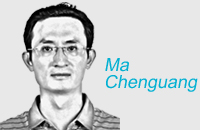Numbers and trends of agricultural crop protection industry in Brazil
Brazil is one of the largest markets for crop protection with sales of $9.6 billion in 2015 generated from 87,000 tons of commercial products. In these, the most important categories were herbicides ($3.1 billion, around 32 percent of share) insecticides ($3.17 billion, 33 percent) fungicides ($2.9 billion, 30 percent) and others ($449 million, 5 percent).
The soybeans crop is the largest market with $4.97 billion (52 percent) followed by sugar cane (10%, $984 million), corn ($938 million, 10 percent), cotton (around $700 million, 7 percent) and others with the remaining 21 percent.
When considering the regions of Brazil, Mato Grosso is the largest consumer with around 23 percent followed by S?o Paulo, Paraná and Rio Grande do Sul with 13 percent each. These four states represent 62 percent of the total. So even in Brazil the sales are relatively concentrated.
The analysis of the types of products shows specialty products (have patents) with 62 percent of share ($5.9 billion) and generic with around 38 percent ($3.7 billion). Herbicides and acaricides are the categories where the share of generics is higher than 50 percent and fungicides and insecticides have larger share of specialty products.
The market fell almost 22 percent when considering $ value from 2014. The major reasons were the devaluation of the Real (sales in local market are in Reais), large stocks in the channels and credit issues affecting farmers. It was the first year in five that the market fell in US$. The largest fall was insecticides had with almost 35 percent, mostly in the soybeans market, the fell almost $ 2 billion. Generics fell 38 percent in 2015.
Market shares in 2015 among the largest companies was: Syngenta 19.4 percent; Bayer 18.3 percent, Basf 10 percent; FMC+ Cheminova 7.6 percent; Dupont 7.2 percent; Dow 6.3 percent, Monsanto 4.3 percent, Adama 4,1 percent, Nufarm 3.9 percent, Arysta 3.5 percent. In 2015 we had increasing shares Bayer, Basf, UPL and Ouro Fino. Companies that lost share were FMC, Dupont and Monsanto. The four largest companies in Brazil considering the latest acquisitions have almost 66 percent of the total market.
The states that gained shares were S?o Paulo, Mato Grosso and Paraná and the ones that lost shares were Minas Gerais, Bahia and Maranh?o.
This is an industry facing a lot of changes as we can see daily in the press. Mergers, acquisitions, internationalization and newcomers are current challenges. There is an increasing interest of global companies on Brazilian agriculture, mostly from China and other food demanding countries. The seed market makes part of the strategy of these chemical companies and there is a growing pressure that makes stronger involvement with sustainability.
Crop protection companies are also seeing changes in the go to market strategies (in the marketing channels structure). Concentration of distribution channels; arising of new channels like buying groups, trading companies, e-commerce, cooperatives and other types of consortium and collective actions. We also see the strengthening of farmers and some dealers allowing them to leverage financial resources from different sources; large dealers are becoming less dependent from companies or looking for alternatives, expanding services. It is an exciting industry facing a lot of changes in a growing market!
The author is professor of strategic planning and food chains at the School of Economics and Business, University of Sao Paulo, Brazil (www.favaneves.org) and international speaker. Author of "The Future of Food Business" and coordinator of other 50 books published in 8 countries and in China, "The World on the Tongue".

























